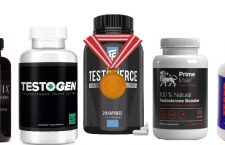We all know that drinking and dieting don’t mix. Alcohol is empty calories, quickly converts to sugar and lowers our inhibitions so we are inclined to eat more. However, for most of us, drinking is a part of birthdays, weddings, anniversaries, weekends, holidays, travel, fine dining, cheap dining, home dining, vacations, boat trips, sailing trips, camping trips, barbecues, happy hours, and in Europe…breakfast. OK, I think you get my drift. That being said, here’s the buzz on how to not let drinking become dangerous to your diet.
Wine: The Most Diet-Friendly Choice
If you’re going to drink, wine is the most calorie-friendly selection with a typical 20 calories per ounce. Each 5-ounce glass would then be 100 calories with no cholesterol, sodium or fat. This is true for both red and white wine, from merlot to chardonnay. Sherry, a sweet, fortified wine runs a bit higher with 32 calories per ounce but it is usually served in smaller portions as an after-dinner drink.Here is the nutritional information for some popular wines per ounce:
| Wine | Calories | Carbs | Per 5-oz Serving |
| Chardonnay | 20 | 0.4 g | 100 calories, 2 g carbs |
| Pinot Grigio | 20 | 0.4 g | 100 calories, 2 g carbs |
| Zinfandel® White Wine | 20 | 0.4 g | 100 calories, 2 g carbs |
| Cabernet Sauvignon | 20 | 0.8 g | 100 calories, 4 g carbs |
| Merlot Red Wine | 20 | 0.8 g | 100 calories, 4 g carbs |
Hard Liquor: Easy on Your Diet
Hard liquor is higher in calories per ounce than wine, and is often mixed with soda, which increases the calorie count. If you’re going to drink liquor, use calorie-free mixers like diet soda or diet tonic water. One shot glass or mixed drink will contain about 1.5 ounces of hard liquor.Here is the nutritional information for some favorites, based on one ounce:
| Hard Liquor | Calories | Carbs | Per 1.5-oz Serving |
| Vermouth | 32 | 0.2 g | 64 calories, 0.4 g carbs |
| Coconut Rum | 51 | 5.3 g | 77 calories, 8 g carbs |
| Beefeater® Gin | 65 | 0 g | 98 calories, 0 g carbs |
| Rye Whiskey | 69 | 0 g | 104 calories, 0 g carbs |
| Scotch Whiskey | 69 | 0 g | 104 calories, 0 g carbs |
| White Rum | 69 | 0 g | 104 calories, 0 g carbs |
| Vodka | 69 | 0 g | 104 calories, 0 g carbs |
| Cognac | 69 | 2 g | 104 calories, 3 g carbs |
| Tequila | 69 | 5.3 g | 104 calories, 8 g carbs |
| Gilbey’s® Gin | 79 | 0 g | 119 calories, 0 g carbs |
Beer: Raise Your Glass with Care
Beer is the next best choice for dieters with, about 150 calories per 12-ounce serving. Choosing light beers will drop your caloric intake without sacrificing much flavor, but keep in mind that it can be hard to estimate your intake when pouring from a pitcher or into an oversized beer mug.Here is the nutritional information for different types of beer, based on a single ounce:
| Beer | Calories | Carbs | Per 12-oz Serving |
| “Light” Beer | 9 | 0.5 g | 108 calories, 6 g carbs |
| Draft Beer | 12 | 1.1 g | 144 calories, 13.2 g carbs |
| Lager | 14 | 1.1 g | 168 calories, 13.2 g carbs |
| Ale | 18 | 1.1 g | 216 calories, 13.2 g carbs |
If you budget your calories carefully, you can safely afford to have a drink or two on a special occasion. But beware—drinking loosens your inhibitions and may make you eat without thinking. From a health standpoint, calories aren’t the only thing to consider. Practice moderation (no more than one drink daily for women and no more than two drinks daily for men) and consider other potential health benefits of different types of alcohol. Most health experts recommend the following hierarchy when choosing alcohol based on potential health benefits (such as antioxidant content): choose red wine over white wine; choose wine over beer; choose darker-colored beers over lighter-colored beers; and choose beer over liquor and liqueur.
via Spark People







Leave a Reply